Transfer Story: Łódź - Birmingham - Toulouse - three paths of mediation
Edited on
13 April 2021"To release the potential of the center of Łódź and its Inhabitants" is the slogan which defines the direction of the Łódź revitalization, the biggest regeneration project in Poland. But how to do it when the level of reluctance to city institutions is high, and often the first thing one associates with the City Office is a letter written in incomprehensible language? How to regain the trust lost through the years of miscommunication and start cooperating to give the residents a chance to change their lives for the better? There is only one answer: a mediator.

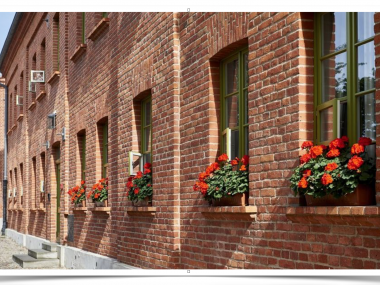
Time for big changes! Revitalization in Lodz style.
Łódź is an old manufacturing town whose history and development was inextricably linked with textile industry. Large factories were a guarantee of livelihood for the people living here. After the collapse of the textile industry in the late 1980s and early 1990s, the city found itself in the shadow of abandoned post-factory buildings. Broken windows and rusty, padlocked gates scratched the still unhealed wounds of the systemic transformation, which had left an exceptionally strong mark on Łódź and its inhabitants. Many of them lost their jobs, falling into the trap of long-term unemployment, poverty and dependence on social allowances. This was especially noticeable in the center of Lodz, where the situation was made even more complicated by the deteriorating housing conditions in old and dilapidating tenement houses. Also the former workers' housing estate on Priest’s Mill (Księży Młyn), which used to be vibrant with life, fell into decline, and just like in the city center, the housing standards of the people residing there were far from modern norms.
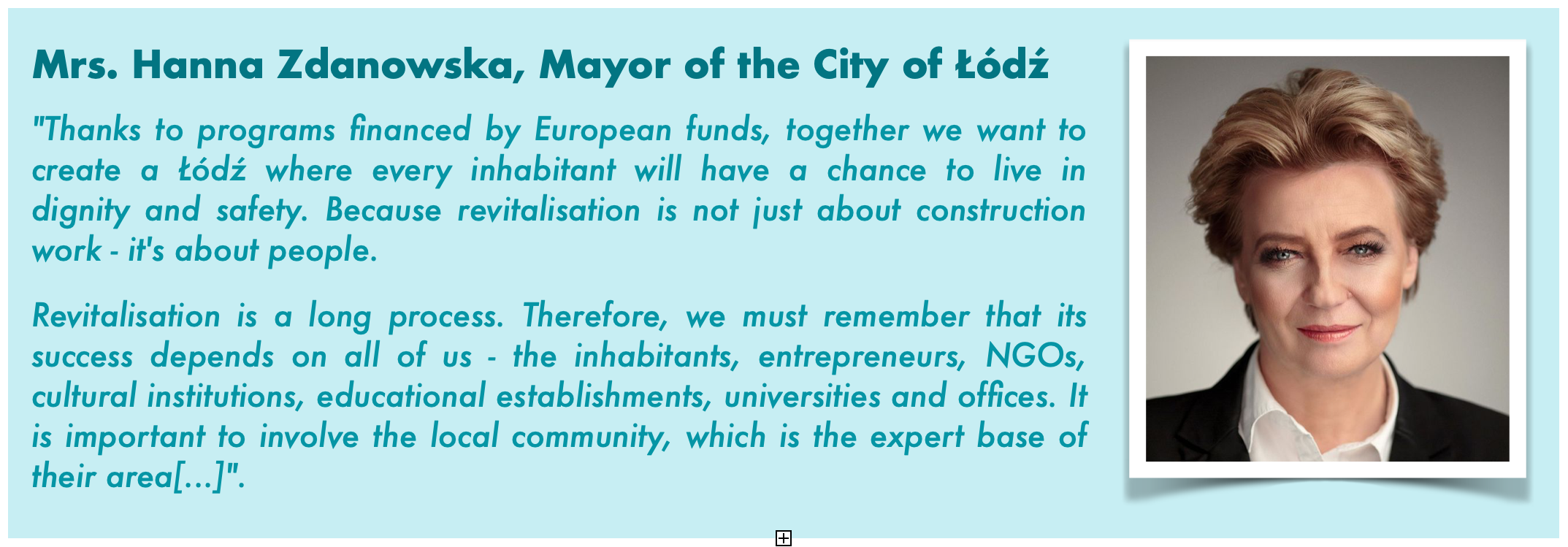
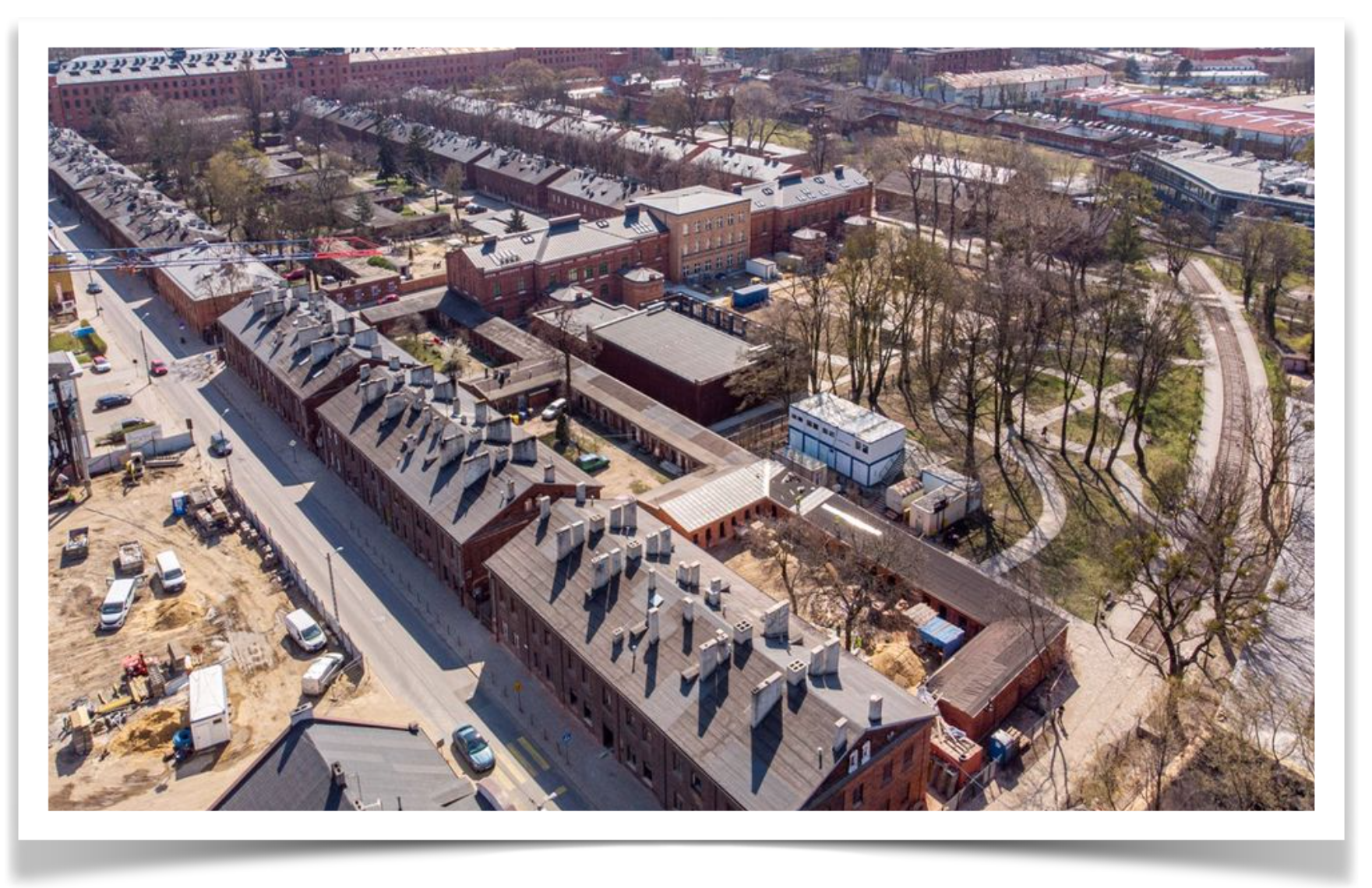 The stimulus for change came with Poland's accession to the European Union. Łódź decided to take the chance offered by the possibility of obtaining grants for the renovation and development of the city. The potential hidden under the falling plaster of tenement houses had to be finally released. Łódź accepted this challenge by starting the largest revitalization project in the country. The first actions covered the area of the historic Karol Scheibler's factory complex, including mainly the former workers' housing estate located in Priest’s Mill (Księży Młyn). The biggest challenge was to guarantee the comprehensiveness of the process while at the same time involving the residents in such a way as to take into consideration their expectations and needs. In order to achieve this, Łódź authorities established a revitalisation coordinator for Priest’s Mill, who launched a series of activities and consultations to prepare the local community for the changes taking place in their place of residence. What is important, meetings with the inhabitants took place not in the office, but in the area where the changes were to take place, in a
The stimulus for change came with Poland's accession to the European Union. Łódź decided to take the chance offered by the possibility of obtaining grants for the renovation and development of the city. The potential hidden under the falling plaster of tenement houses had to be finally released. Łódź accepted this challenge by starting the largest revitalization project in the country. The first actions covered the area of the historic Karol Scheibler's factory complex, including mainly the former workers' housing estate located in Priest’s Mill (Księży Młyn). The biggest challenge was to guarantee the comprehensiveness of the process while at the same time involving the residents in such a way as to take into consideration their expectations and needs. In order to achieve this, Łódź authorities established a revitalisation coordinator for Priest’s Mill, who launched a series of activities and consultations to prepare the local community for the changes taking place in their place of residence. What is important, meetings with the inhabitants took place not in the office, but in the area where the changes were to take place, in a  nearby school or in the backyards. This allowed people to feel that their voice made a difference. The model of relocation developed after the consultations, using empty premises on the estate, made it possible to avoid major changes in the lives of residents who feared this the most. During the renovation they stayed in their own housing estate, among people they had known for years. At the same time, the revitalization coordinator made sure that the apartments to which they returned after renovation were adapted to their individual needs.The revitalisation process started in Priest’s Mill was, however, only a prelude to what awaited us as the City, the Office and the officials when we started our activities in the center. For years social problems had been growing there, accompanied by disorderly housing issues and lack of trust towards institutions, including those providing social services. To meet all these challenges it was necessary to create a system in the center of which would be the people directly affected by the revitalization process. A system which would not only allow the revitalisation of the downtown to begin but, above all, ensure that the people living here receive adequate support from their city and it is help which, importantly, they are willing to accept.
nearby school or in the backyards. This allowed people to feel that their voice made a difference. The model of relocation developed after the consultations, using empty premises on the estate, made it possible to avoid major changes in the lives of residents who feared this the most. During the renovation they stayed in their own housing estate, among people they had known for years. At the same time, the revitalization coordinator made sure that the apartments to which they returned after renovation were adapted to their individual needs.The revitalisation process started in Priest’s Mill was, however, only a prelude to what awaited us as the City, the Office and the officials when we started our activities in the center. For years social problems had been growing there, accompanied by disorderly housing issues and lack of trust towards institutions, including those providing social services. To meet all these challenges it was necessary to create a system in the center of which would be the people directly affected by the revitalization process. A system which would not only allow the revitalisation of the downtown to begin but, above all, ensure that the people living here receive adequate support from their city and it is help which, importantly, they are willing to accept.
The basis of this system was the establishment a team of mediators: Social Lighthouse Keepers and Area Hosts, who have taken care of about 700 families from the area of eight priority revitalization projects of the city center. Although the main goal of the mediators' work is to prepare the residents for the upcoming changes, to go with them through the difficult phase of moving and to support them in the process of changing their lives, which often accompanies relocation to another part of the city, it turned out during the talks that help is needed on many different levels. Each tenement house, gate, apartment, and  most of all, each person living behind one of hundreds of doors, which the mediators knocked on, has their own history - often difficult, marked by abuse in the family, addiction, poverty or social exclusion. Mediators also became, to some extent, family assistants, social workers or caretakers of the elderly - a kind of pillar for residents who face loneliness, lack of care and other difficult social problems. The support of a dedicated mediator was also extended to entrepreneurs whose premises are located in revitalized tenement houses and whose business activities are significantly hampered by street renovations.
most of all, each person living behind one of hundreds of doors, which the mediators knocked on, has their own history - often difficult, marked by abuse in the family, addiction, poverty or social exclusion. Mediators also became, to some extent, family assistants, social workers or caretakers of the elderly - a kind of pillar for residents who face loneliness, lack of care and other difficult social problems. The support of a dedicated mediator was also extended to entrepreneurs whose premises are located in revitalized tenement houses and whose business activities are significantly hampered by street renovations.
To make the activities of mediators possible, it was necessary to train the officials and also - taking into account the number of social problems we will have to deal with - the employees of the City Center for Social Care, the City Guard, the Police and non-governmental organizations. The goal of specially prepared workshops was to show what revitalisation is, how important coopera tion and dialogue are between various institutions as well as with the inhabitants, and what role will be played in this process by mediators working with people in the field, in their tenement houses, apartments and on their streets.
tion and dialogue are between various institutions as well as with the inhabitants, and what role will be played in this process by mediators working with people in the field, in their tenement houses, apartments and on their streets.
This way of cooperating with the inhabitants of degraded areas, openness to their needs, dialogue, looking for solutions to the identified difficulties and problems together, thus actively involving the inhabitants in the revitalisation process, has built our Good Practice whose main motto is the weaving a collaborative city.
What more can we do for our community?
As a city we also faced another challenge. Helping to solve the inhabitants' housing and everyday life problems, support in dealing with difficulties was what dominated the work of the team of Area Hosts and Social Lighthouse Keepers. We had to answer the question: what next? How to work with the people who stayed, with the inhabitants of the buildings which are not subject to renovation, including those who live in community buildings or belong to private owners? How to change their way of looking at the city, their neighbours or in their sense of responsibility for the space in which they live, work and spend their free time? How to release their resources so that they become an active community participating in the creation of the city? How to involve institutions and organisations in activities for the benefit of local communities? It became clear to us that we needed to go beyond a framework of support and assistance in solving problems and awaken the sleeping potential of people, that change would take place not only on the buildings or in the streets, but above all in the way we think about the space we live in. We needed inspiration that would allow us to achieve this, while using what we had already created.
 From the first phase of the project, our attention has been drawn to Braga and Birmingham's use of socio-cultural animation as a tool for involving and activating residents. These solutions made us look at the revitalisation area more widely and helped us understand that its needs are bigger and go beyond the activities undertaken so far. This helped us to set the direction for our activities that we wanted to follow during the next phase of the project.
From the first phase of the project, our attention has been drawn to Braga and Birmingham's use of socio-cultural animation as a tool for involving and activating residents. These solutions made us look at the revitalisation area more widely and helped us understand that its needs are bigger and go beyond the activities undertaken so far. This helped us to set the direction for our activities that we wanted to follow during the next phase of the project.
The three paths of mediation
The most crucial moment for us was the transnational meeting in France, which brought a vision of the new competences of mediators and the roles they can play in the city. We learned how to work not only with the inhabitants but also with other stakeholders in the revitalisation area. Especially important for us were the experiences of Toulouse and Birmingham. In the first of the cities, activities in the area of investment projects, including revitalisation projects, are supervised by the Area Manager whose task is to bring together all entities, including private investors, in a given area, which allows for an integrated management of the entire investment process. Our British partner, on the other hand, has a kind of community connector who motivates and inspires small groups of inhabitants to take bottom-up actions. In this way, he integrates people with each other on the one hand, and on the other builds in them a sense of community and responsibility for the space and the neighbors with whom they share it.
When we returned from France, we met with the whole team of Social Lighthouse Keepers and Area Hosts to talk to them about the direction of mediation in the city. We shared with them what we learned from the partners from Toulouse, Birmingham and Braga. Together, we discussed how their experience could be transferred to Lodz and how to adapt the roles of mediators to the current needs of small areas of the city. As a result, a vision of three paths of action for mediators was developed, working in parallel and complementing each other in functioning on the area:

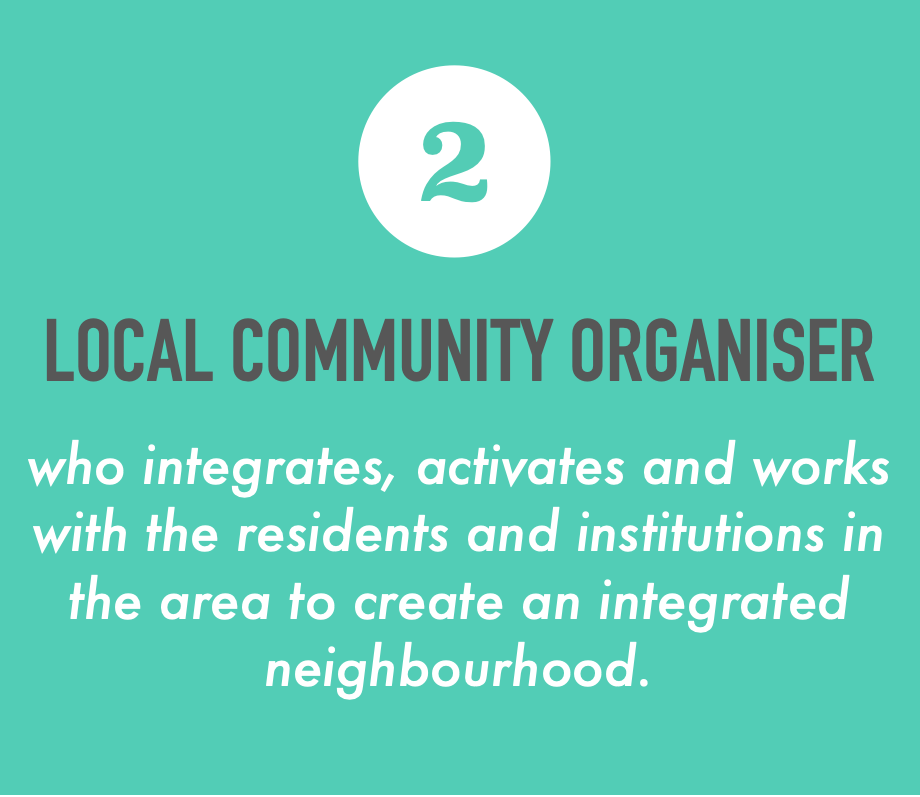
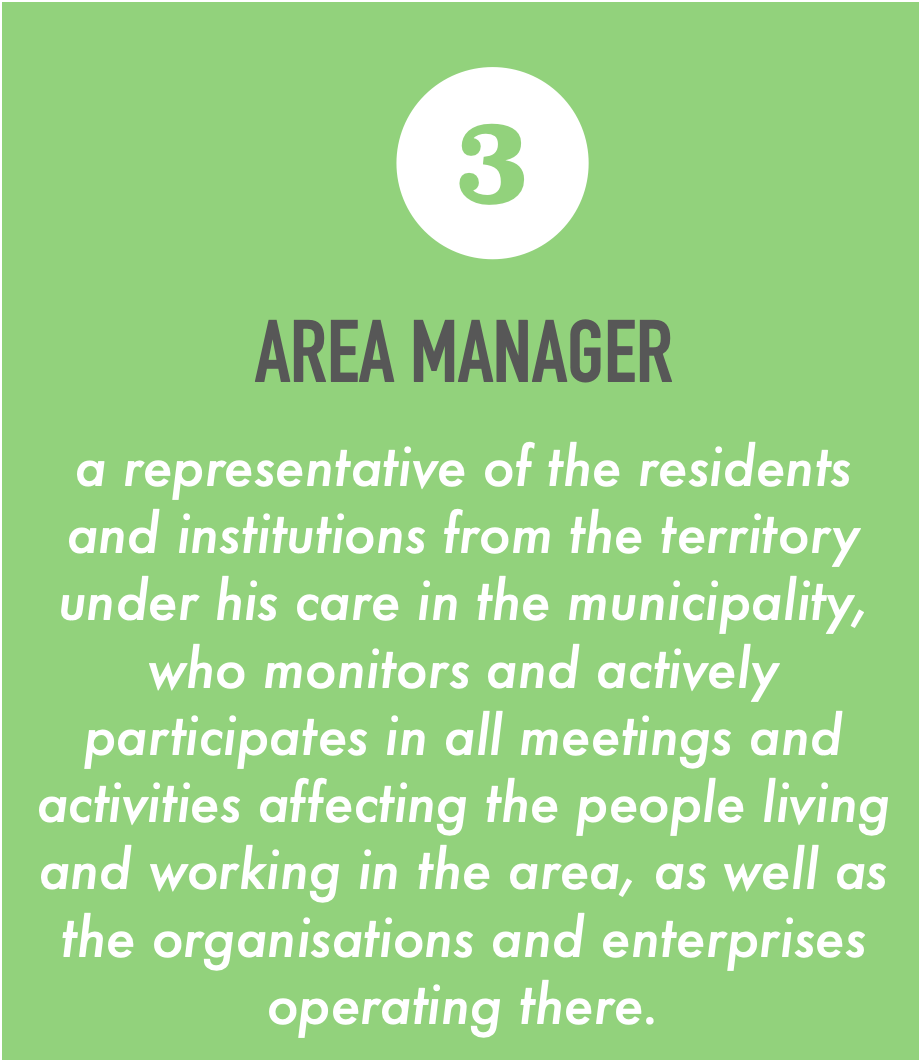

 The next step taken by us was to designate two areas of the city, on which we decided to test the developed solution in practice. Both were located in the area of priority revitalisation projects in the centre of Łódź. On the first of them, the process of moving was still ongoing and the renovation of buildings and streets was planned for a later date. What is important there are several tenement buildings renovated within the framework of the urban renovation program, to which people from buildings designated for revitalisation were moved. The situation of the second area was different. The process of moving out was coming to an end and the reconstruction of the tenement houses and the renovation of the street were about to start.
The next step taken by us was to designate two areas of the city, on which we decided to test the developed solution in practice. Both were located in the area of priority revitalisation projects in the centre of Łódź. On the first of them, the process of moving was still ongoing and the renovation of buildings and streets was planned for a later date. What is important there are several tenement buildings renovated within the framework of the urban renovation program, to which people from buildings designated for revitalisation were moved. The situation of the second area was different. The process of moving out was coming to an end and the reconstruction of the tenement houses and the renovation of the street were about to start.
Time to start testing!
At the first area we decided to work on a micro scale, testing new roles of mediators in a small community that lives in one of the tenement houses settled by the moving process. So it was a relatively young community that was still building its collective capacity. Working in his new role, the mediator began collaborating with them to encourage them to start a joint initiative. With his support and openness to new possibilities, the residents succeeded in obtaining funds from the city's micro-grant programme to transform the backyard space and open it to neighbourhood initiatives, including for people living outside the property. This action made us sure that the evolution of the role of the mediator in the city is the right one. We saw the importance of the role of an "inspirer" in local communities who, by motivating and supporting people, triggers in them the will to act together and strengthen neighbourly ties. The wall separating the backyard from other properties, decorated with a flowery mural, today connects and invites people to spend time together and take care of the garden and recreation area created by the residents.
 On the second area we worked much more extensively, building cooperation with institutions and organizations operating in the neighborhood, whose activities are addressed to various groups of citizens. We formed a Local Action Group (ULG) with representatives of non-governmental organisations, cultural and educational institutions, artistic and religious associations and entrepreneurs, making it possible for them to dialogue and exchange resources and experiences. It turned out during the very beginning of the group's meeting that despite the fact that all of them operate in close vicinity of the other they had no opportunity to get to know closer, take joint initiatives or support each other's activities. By creating this group, we added an element which was missing from the puzzle of various entities functioning in the area. We gave them space, a platform to work together and develop their potential to build a friendly and active neighborhood in which they want to live and take action for the benefit of each other.
On the second area we worked much more extensively, building cooperation with institutions and organizations operating in the neighborhood, whose activities are addressed to various groups of citizens. We formed a Local Action Group (ULG) with representatives of non-governmental organisations, cultural and educational institutions, artistic and religious associations and entrepreneurs, making it possible for them to dialogue and exchange resources and experiences. It turned out during the very beginning of the group's meeting that despite the fact that all of them operate in close vicinity of the other they had no opportunity to get to know closer, take joint initiatives or support each other's activities. By creating this group, we added an element which was missing from the puzzle of various entities functioning in the area. We gave them space, a platform to work together and develop their potential to build a friendly and active neighborhood in which they want to live and take action for the benefit of each other.
During almost two years of our work, we managed to organize more than ten initiatives and events of various scale and scope, whose recipients and participants became residents of the area. One of the most spectacular results of the integrating and motivating work of the Local Community Organizer is the fact that the members of our ULG group received funding for the Little Big Stories project in the framework of the competition organized by the Polish History Museum. Its main aim was to search for unusual stories about places that are just around the corner and that anyone can discover. This project would never have happened if our Local Community Organizers had not knocked on the doors of institutions and non-governmental organizations operating in the area, just as they did earlier to the residents. This time, however, they didn't want to talk about their everyday problems, but about ideas, concepts and hopes of cooperation for the benefit of the nearest neighborhood. What is very important, all these activities allowed the inhabitants to get to know the potential hidden in their neighbourhood - such as institutions and organisations which decided to go beyond their comfort zone, opened up and showed themselves to the world, gaining not only new opportunities, but also a group of new recipients.
Stories project in the framework of the competition organized by the Polish History Museum. Its main aim was to search for unusual stories about places that are just around the corner and that anyone can discover. This project would never have happened if our Local Community Organizers had not knocked on the doors of institutions and non-governmental organizations operating in the area, just as they did earlier to the residents. This time, however, they didn't want to talk about their everyday problems, but about ideas, concepts and hopes of cooperation for the benefit of the nearest neighborhood. What is very important, all these activities allowed the inhabitants to get to know the potential hidden in their neighbourhood - such as institutions and organisations which decided to go beyond their comfort zone, opened up and showed themselves to the world, gaining not only new opportunities, but also a group of new recipients.

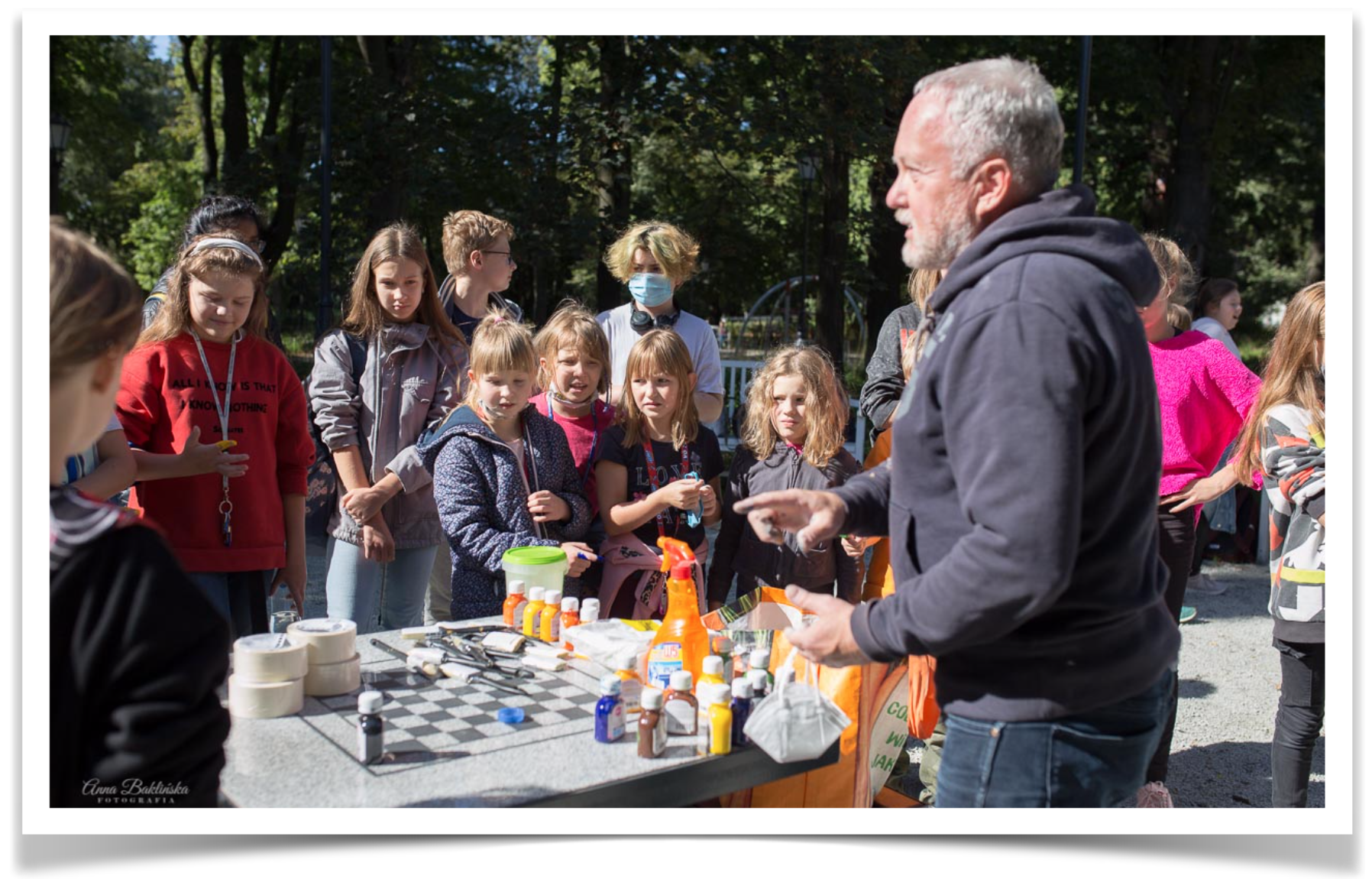 We ourselves also discovered the forgotten potential, which in the whole process of revitalization, was covered under the layer of moving families and difficult social problems of adults. Thanks to the activities of the ULG group we again noticed "little people" whose role in the process of change, as it turned out, is incredibly important. Children unexpectedly became for us an important driver of change and of raising awareness of the shared responsibility for the space around us and the need to take action for its benefit. At a certain stage, they were the ones who pointed out the directions of changes that should take place not only in their backyards, but in the neighborhood in general, also in the social context related to contacts with local residents and institutions or NGOs. They raised awareness among their parents and encouraged them to be active, discouraging them from being passive and indifferent.
We ourselves also discovered the forgotten potential, which in the whole process of revitalization, was covered under the layer of moving families and difficult social problems of adults. Thanks to the activities of the ULG group we again noticed "little people" whose role in the process of change, as it turned out, is incredibly important. Children unexpectedly became for us an important driver of change and of raising awareness of the shared responsibility for the space around us and the need to take action for its benefit. At a certain stage, they were the ones who pointed out the directions of changes that should take place not only in their backyards, but in the neighborhood in general, also in the social context related to contacts with local residents and institutions or NGOs. They raised awareness among their parents and encouraged them to be active, discouraging them from being passive and indifferent.
Lessons for mediators
Building a Local Action Group (ULG), running and motivating it was a great challenge and a lesson for our Local Community Organizers who, on the one hand, could test new competences related to integration and social animation and, on the other , were able to look at the area as a whole in the context of creating a network of important actors for joint action.


The group not only allowed us to test the new functions of mediators in the city, which had been developed during the project, but also, after several months of cooperation, evaluated the implemented solution with us. Together we worked on a set of competencies and their adaptation to the conditions of cooperation with all stakeholders in the area. We talked about what works and what doesn't. What needs improvement and what is missing in our solution. It turned out that residents want to identify "one face" to communicate with. What is important, however, they didn’t reject the fact that people with various competencies are needed at different stages of revitalization project. However, these people should intermingle and exchange smoothly, because their simultaneous action can cause unnecessary confusion and disorientation. Thanks to collaborative work, our vision of the Area Manager has also changed. The adopted name was associated by our partners too formally, built a distance and a wall between what is neighborhood, backyard, and the municipality and its representative, who appeared to them as a stiff official in a tie, not understanding the work in the field with the community. The Area Manager, on their advice, was therefore renamed Area Host, who cares, supports and offers a helping hand when there is a need.

 The work we have done together with our partners has allowed us to verify the solutions we are implementing. In the area where our group operates, we decided to focus on testing one, rather than two roles. We have understood that we are at the stage of building neighbourhood ties, integrating and establishing cooperation, which means that the competences of a Local Community Organiser who joins, networks and motivates will be the most useful and helpful for the community at this moment. Then, when the communities will inspire themselves to joint actions or when one of the local leaders will be ready to undertake the function of the Organizer with general agreement and trust from the whole group, it will be time to introduce the Area Host, who will support them, but no longer lead them by the hand.
The work we have done together with our partners has allowed us to verify the solutions we are implementing. In the area where our group operates, we decided to focus on testing one, rather than two roles. We have understood that we are at the stage of building neighbourhood ties, integrating and establishing cooperation, which means that the competences of a Local Community Organiser who joins, networks and motivates will be the most useful and helpful for the community at this moment. Then, when the communities will inspire themselves to joint actions or when one of the local leaders will be ready to undertake the function of the Organizer with general agreement and trust from the whole group, it will be time to introduce the Area Host, who will support them, but no longer lead them by the hand.
Voices and opinions heard during the evaluation allowed us to look with reflection at the first area where we tested our solutions in the form of micro-action. We came to the conclusion that despite the undoubted success related to the creation and renovation of the backyard space, the residents of the neighborhood were more interested in the upcoming renovations than in the newly created space for integration. There is also still a lot of work to be done here in terms of relocation issues. We realized that this area still needed a mediator to support them in the upcoming changes process. Only after the process of moving out is complete, and the neighborhood fully begins to form in its new image, then it will be time for the Community Organizer to act.

How did we survive the Covid crisis and what happened afterwards
 It seemed that nothing could stop us from further intensifying our efforts for an integrated neighborhood. We improved the transferred solution and matched it to the community's expectations. The group members flooded us with new, interesting ideas for neighbourhood activities. And then the world stopped, and so do did we.
It seemed that nothing could stop us from further intensifying our efforts for an integrated neighborhood. We improved the transferred solution and matched it to the community's expectations. The group members flooded us with new, interesting ideas for neighbourhood activities. And then the world stopped, and so do did we.
The dynamic development of the group was halted by the pandemic. We had to move all our activities to the network. It was practically unrealistic to continue our previous activities aimed at the residents. These required direct interaction with other people. We could only make plans for the future when we would again be able to go out and work in the field. The level of engagement of the group members clearly decreased, especially in the first months of the new reality in which we all found ourselves. Several of them left us to face their own problems brought on by the limitations of lockdown. The most active ones,  however, have stayed. Also new ones have joined, such as the branch of the City Library, whose seat was created as part of the ongoing project of revitalizing the city center, or an active group of seniors from another branch of the Library in the area.
however, have stayed. Also new ones have joined, such as the branch of the City Library, whose seat was created as part of the ongoing project of revitalizing the city center, or an active group of seniors from another branch of the Library in the area.
As a group, we are working and planning the social and neighborhood development of our area. In the coming months, our goal is to create a place that will allow all residents to creatively spend time outdoors. It is to be a space of artistic freedom, encouraging the realization of interesting ideas and allowing everyone to express themselves through various forms of art.
Local Community Organizers are actively present in the area. They are searching for new local activists who would like to join our ULG and audiences that we can reach with our initiatives. At the same time, they are more and more often giving the space for action to the members of our group, among whom we are starting to see potential leaders. Perhaps in some time they will be able to lead the group's activities and take over the role of the Local Community Organizer.
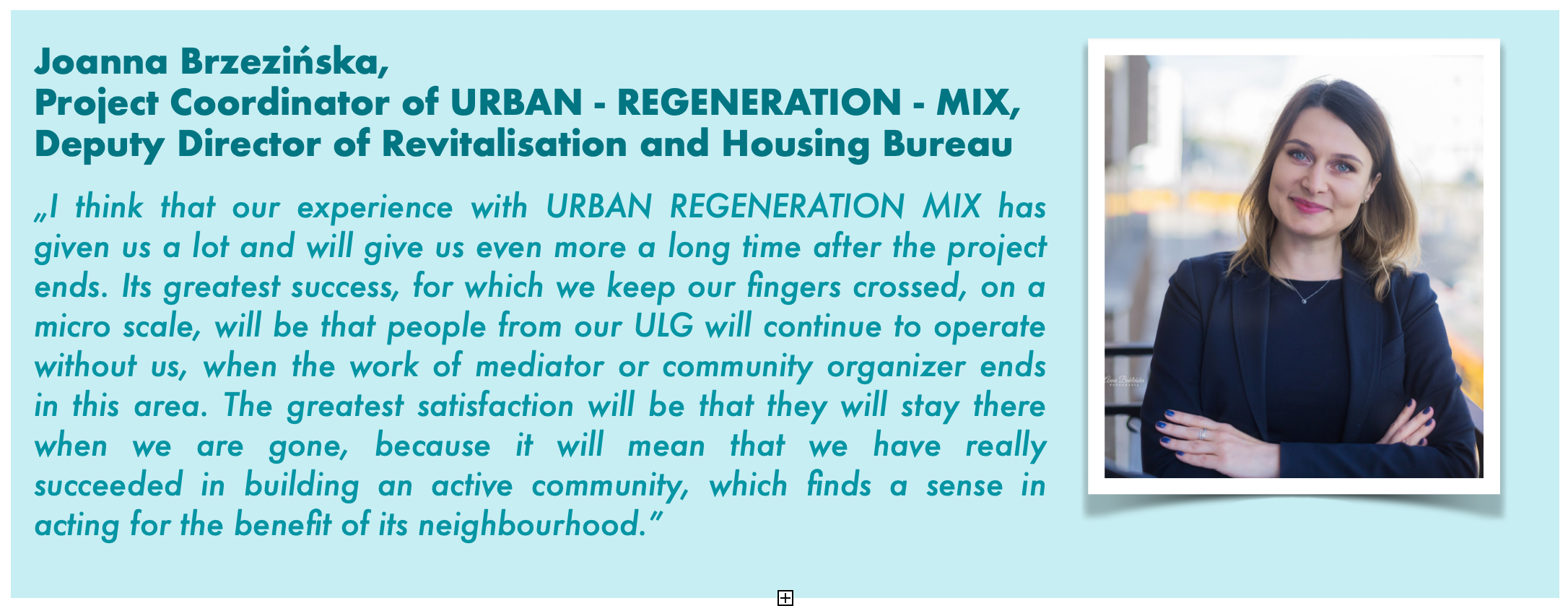
URBACT Support
The last two years of our work wouldn't have been possible if URBACT hadn't noticed the potential of the Lodz solution. Thanks to being awarded the Good Practice title, we were able to create a network to which we invited six European cities (Baena, Birmingham, Bologna, Braga, Toulouse and Zagreb) which, like us, are facing the challenge of raising the level of participation in revitalised areas. Equipped by URBACT with a toolkit, we could learn from each other, inspire and improve our Good Practice.
Of special importance for our city was the establishment an URBACT Local Action Group. Developed by URBACT the method of functioning of this tool allowed us to open to a different kind of cooperation with institutions and organizations operating in the 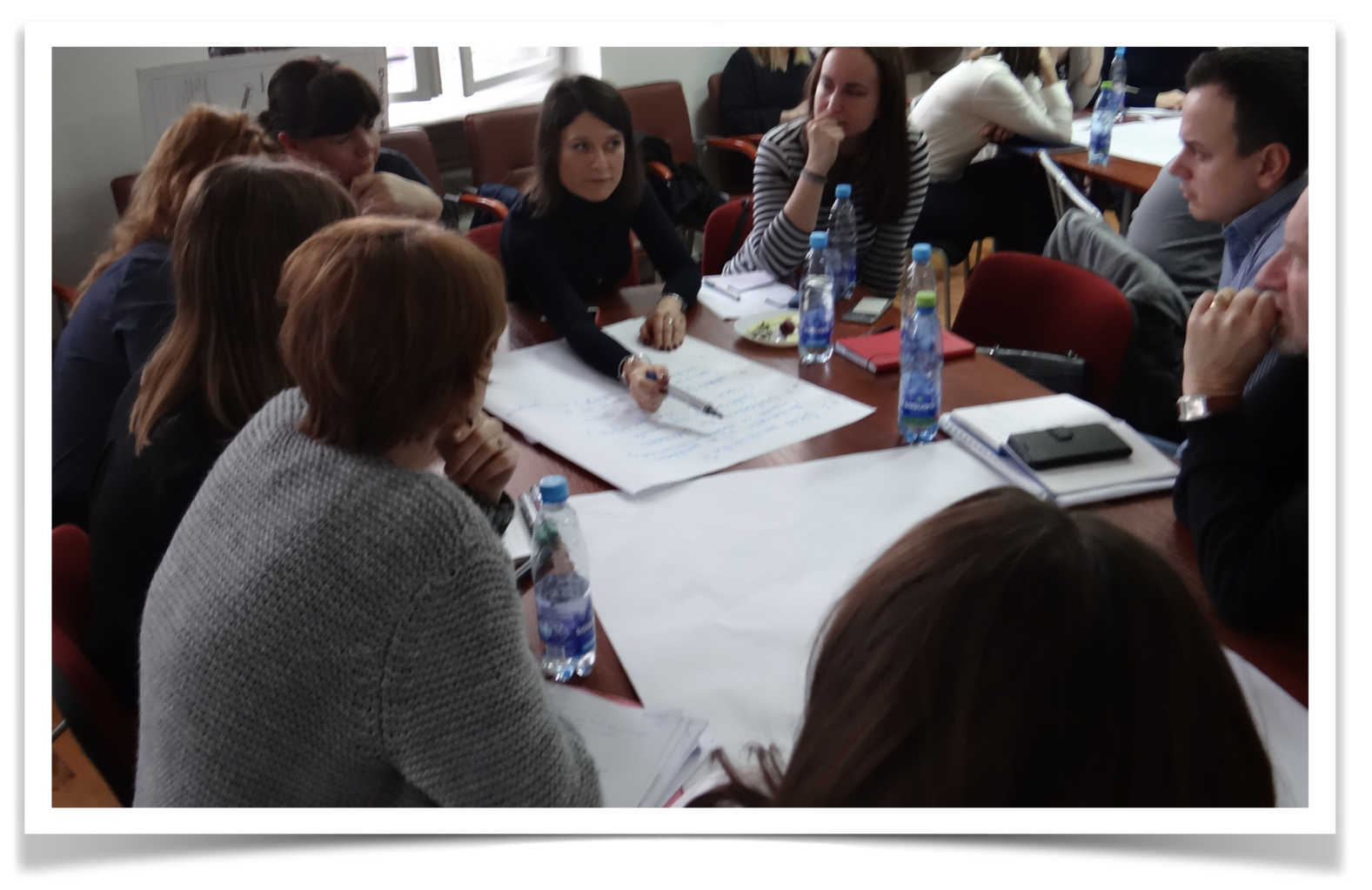 selected area. We went beyond the usual model of dependence in a joint operation, which is based primarily on the imp
selected area. We went beyond the usual model of dependence in a joint operation, which is based primarily on the imp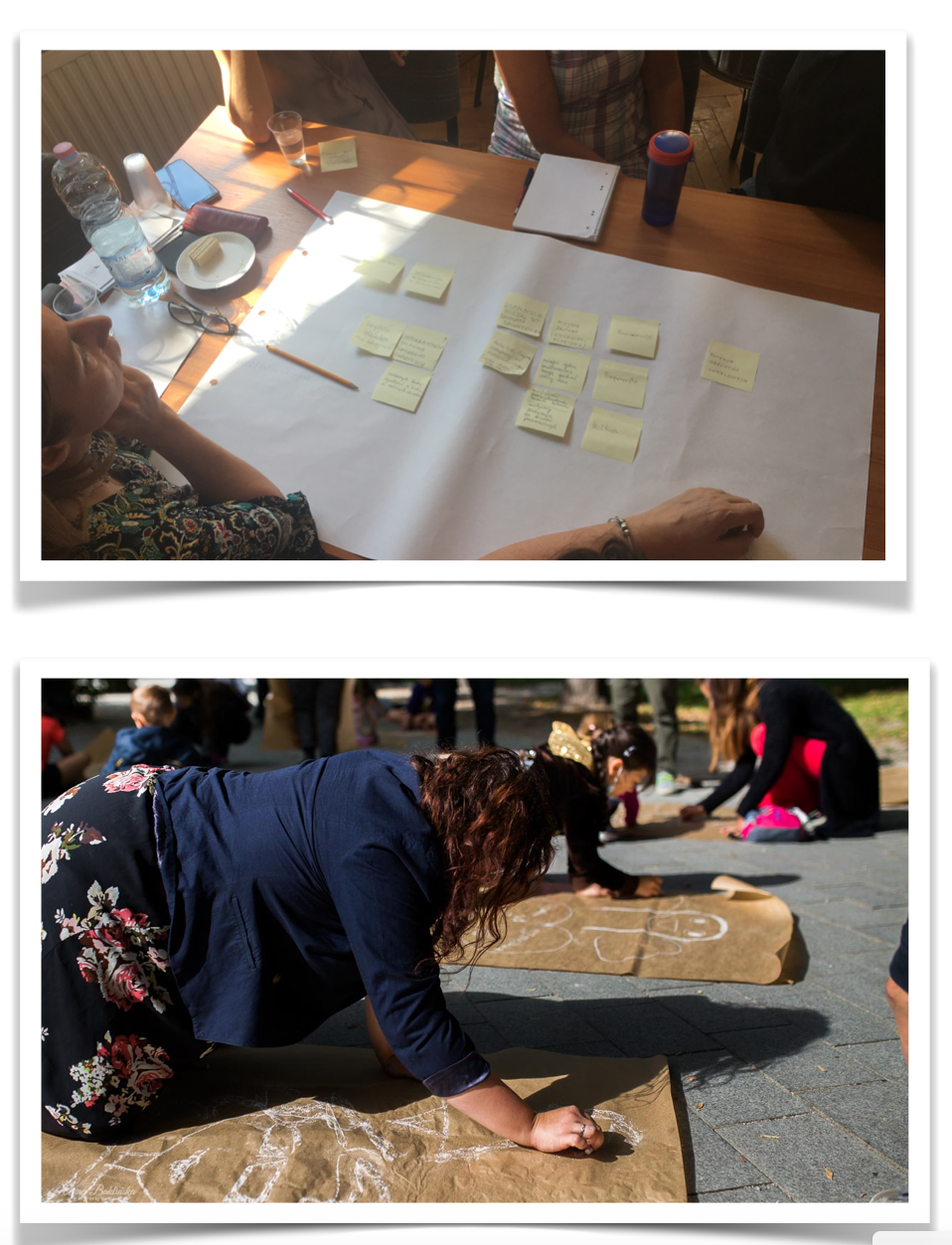 lementation of tasks commissioned by the City. We created a space for discussion, integration and cooperation for the benefit of the entire area and exchange of resources, both tangible, such as lending premises for the organization of an event, and and non-tangible aspects of the exchange of experience related to sharing experiences and ideas. This tool plays a key role especially in such participatory projects as ours. In our case, not only did we work together on the solution, but with the participation of all the members of the ULG we tested its functioning in practice. Without the group, testing a new type of mediator in the form of a Community Organizer would not have been possible on such a large scale, and the effects of its work would probably not have been noticed so quickly.
lementation of tasks commissioned by the City. We created a space for discussion, integration and cooperation for the benefit of the entire area and exchange of resources, both tangible, such as lending premises for the organization of an event, and and non-tangible aspects of the exchange of experience related to sharing experiences and ideas. This tool plays a key role especially in such participatory projects as ours. In our case, not only did we work together on the solution, but with the participation of all the members of the ULG we tested its functioning in practice. Without the group, testing a new type of mediator in the form of a Community Organizer would not have been possible on such a large scale, and the effects of its work would probably not have been noticed so quickly.
Collaboration and co-creation
Weaving a collaborative city - the slogan that has been guiding our project recently could be easily translated into what is happening in Łódź today. The experience gained in the revitalization process made us see the potential of cooperation, citizen involvement and bottom-up initiatives. Also, the citizens of our city have become more active and more willing than in previous years to participate in the decision-making process in their city. In response to these needs, Łódź started to work on a new development strategy, to which it invited all those who live, work and act here. It has give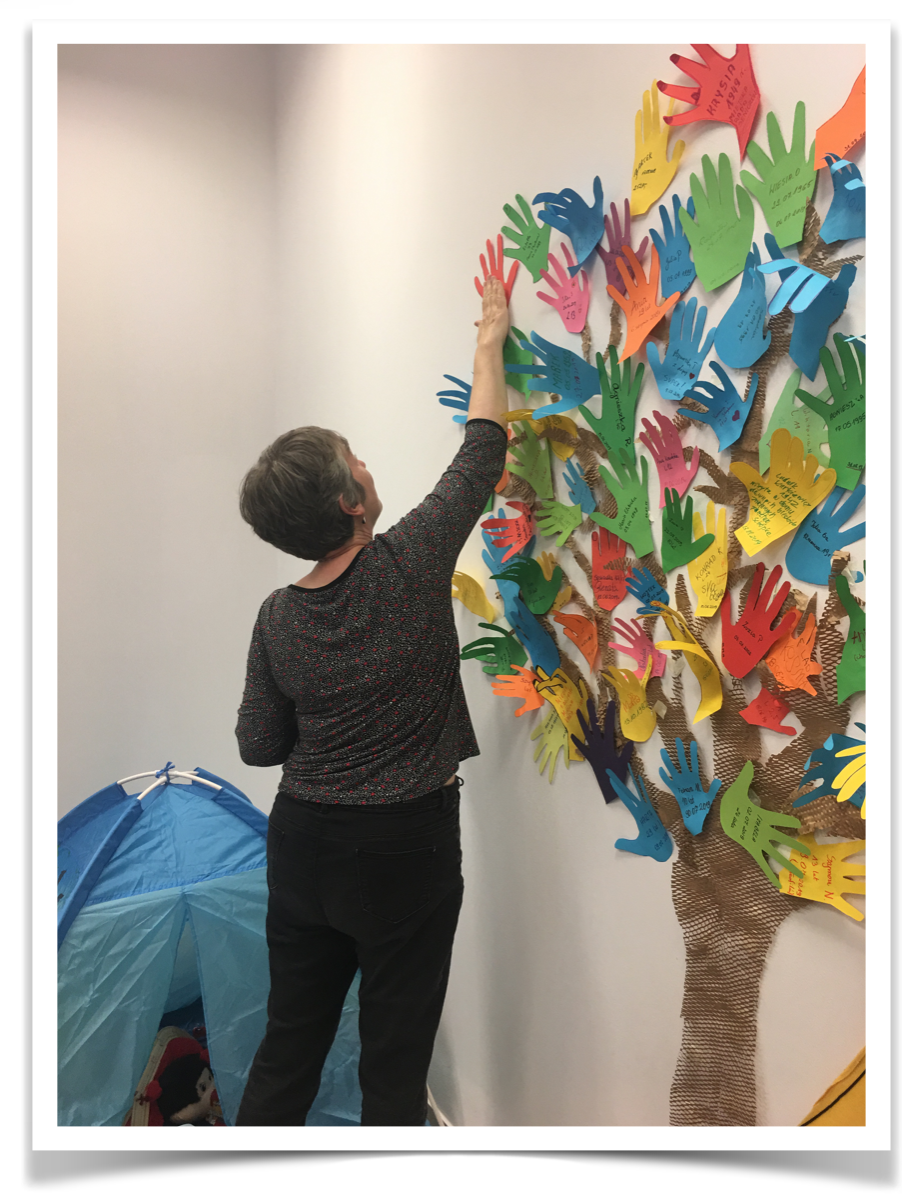 n the voice to all residents by offering a series of meetings and workshops during which they will develop solutions enabling them to co-create the city and implement their own ideas on a larger scale than ever before. Children and young people were not forgotten either. They could share their ideas about the future of the city and involvement of their generation in its co-creation.
n the voice to all residents by offering a series of meetings and workshops during which they will develop solutions enabling them to co-create the city and implement their own ideas on a larger scale than ever before. Children and young people were not forgotten either. They could share their ideas about the future of the city and involvement of their generation in its co-creation.
Another important step was the establishment of the City Activity Bureau in the Municipal Office, which will not only supervise the strategy's consultation process, but first and foremost support residents' participation in the creation of the city and expand the system of public participation, adjusting it to the needs of the citizens' growing involvement in urban affairs.
On the revitalization area we continue to develop a system of supporting neighborhoods and activating small communities. In the coming years, many new integration-friendly functions will be introduced in the renovated tenement houses, including local activity centers and youth and backyard clubs. All of these places have been created with the aim of integrating, activating and building both neighbourhood and intergenerational relations. We are also planning to build local action groups on other areas of revitalisation in order to involve as many stakeholders as possible, who - as we have already learned - together can do much more.
All these actions show that mediation is growing in strength and importance in our city. The activities of our mediators have opened our eyes hpw to what cooperation with the resident should look like, which builds trust rather than walls. With even greater energy and optimism we continue to weave our city, acting more widely and engaging more and more groups of residents.
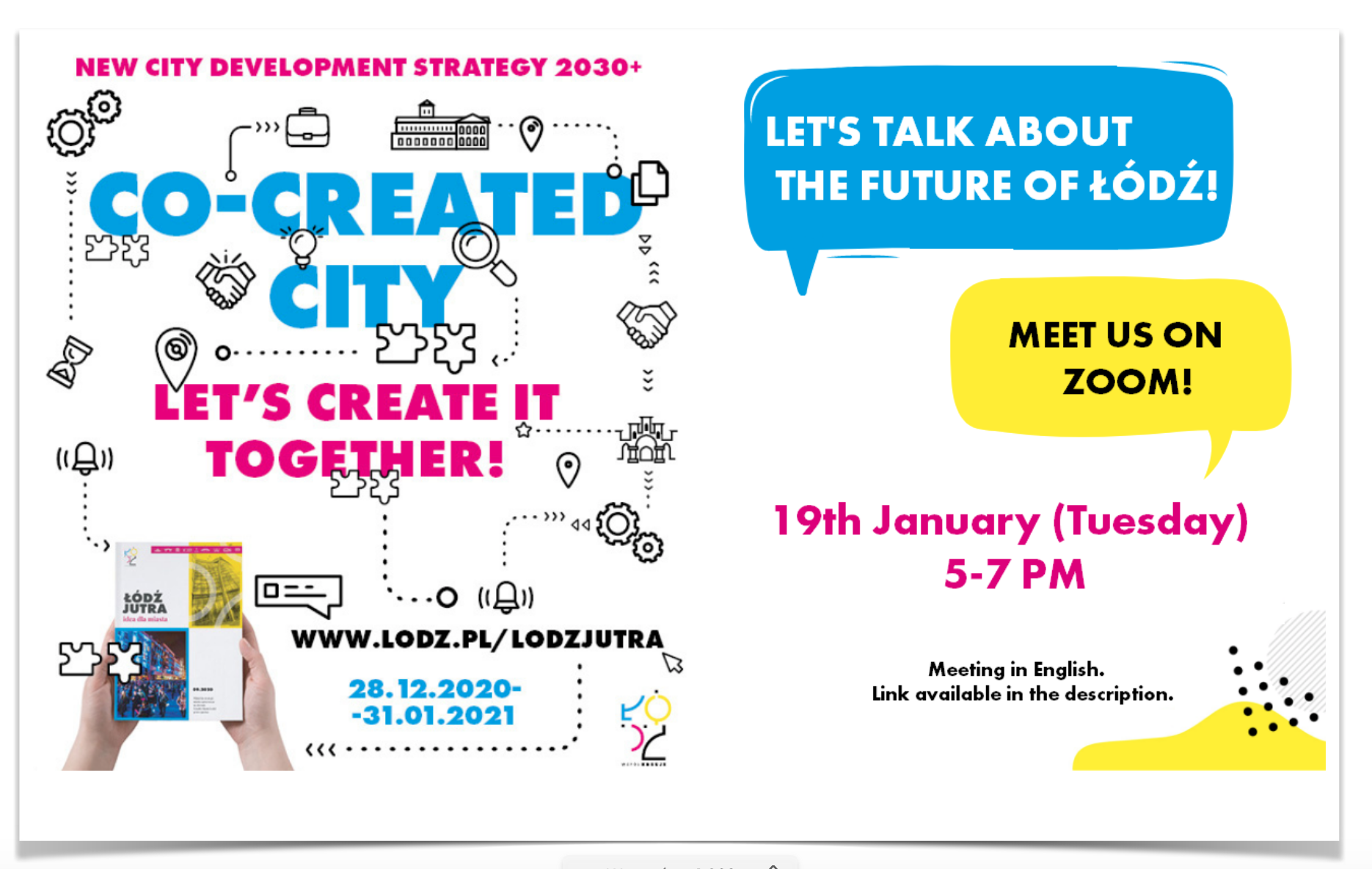
Submitted by n.rydlewska on

